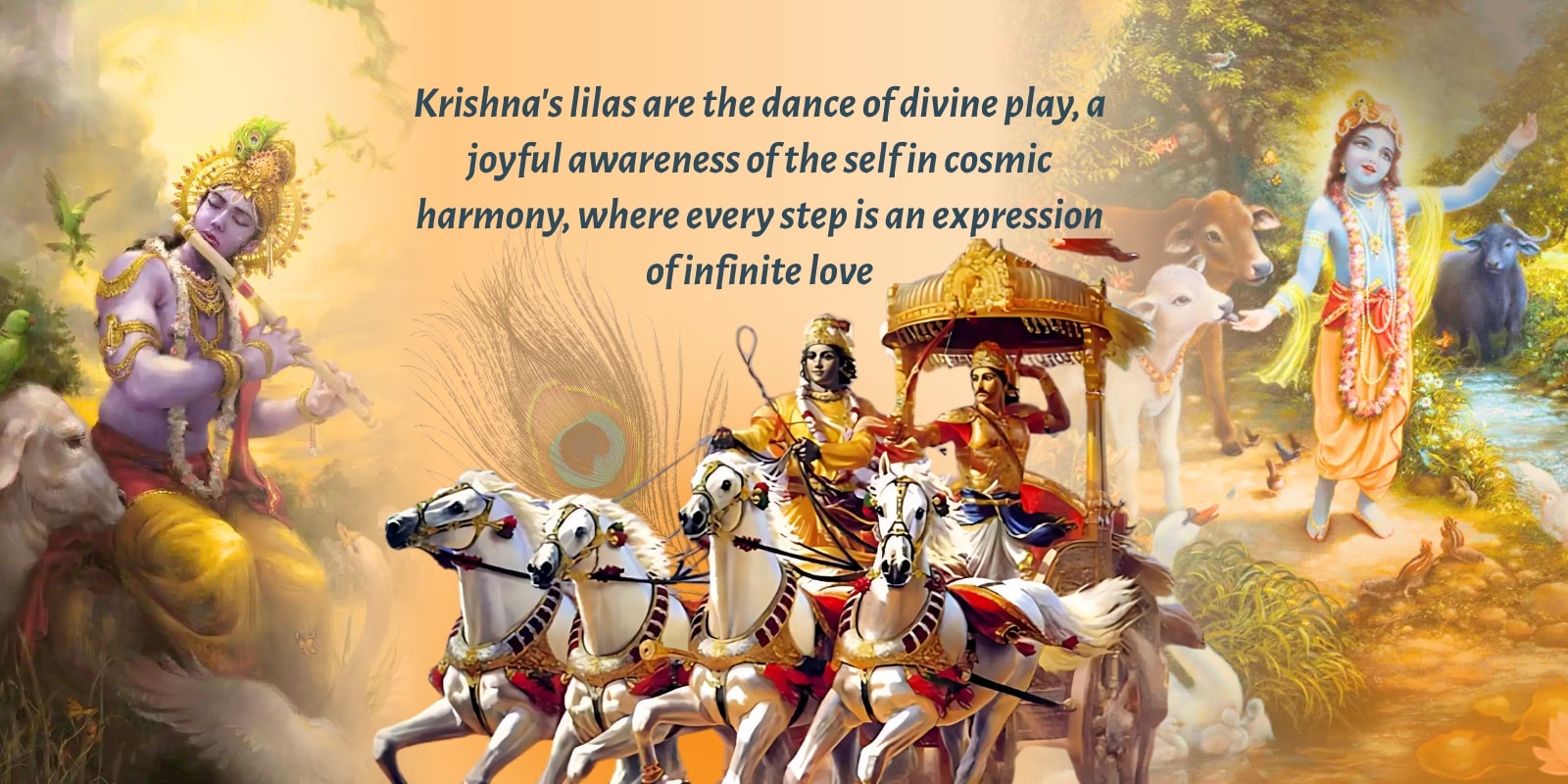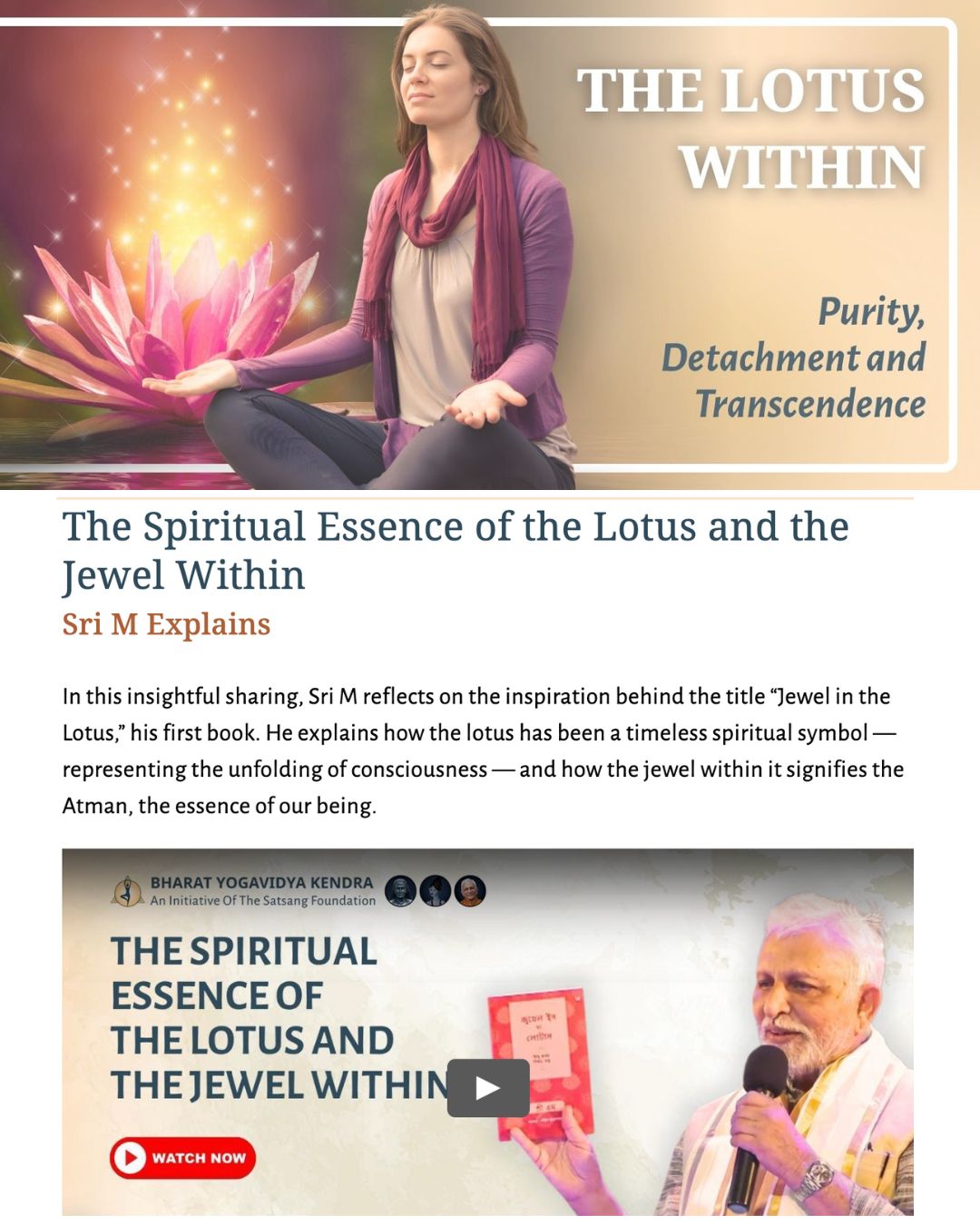Lilas of Krishna:
The Dance of Joyful Awareness
The child of Gokul plays—flute at his lips, dust on his feet—and the world awakens. Krishna’s lilas are not distant miracles; they are mirrors for practice. When he steals butter, the heart learns what to cherish: the makhan of stillness churned from the milk of everyday life. When Mother Yaśodā’s rope is always two inches short, we remember that realization needs both: effort and grace.
Kāliya is subdued on the river—so too can we dance upon the hoods of anger, jealousy, and fear until their poison clears. Lifting Govardhan, Krishna shelters all; in us this becomes the courage to hold fast to dharma when storms gather. And in the rāsa, the circle whirls while the center rests—teaching that awareness is the still point around which action can turn joyfully, without clinging.
Sri M often points us to this union of heart and clarity: simplicity in living, purity in intention, compassion in conduct. Bhakti here is not sentiment, but attentive presence—japa that listens, service that smiles, breath that remembers.
Through this month, may Krishna’s play become our practice: to act lightly, love deeply, and return again and again to the quiet center. In that playful surrender, awareness itself begins to dance.
Sri M Explains
In this insightful video, Sri M explains the power of Bhakti
Talk with M
BLOG POST
Krishna Leela’s : Devotion – Surrender – Patience
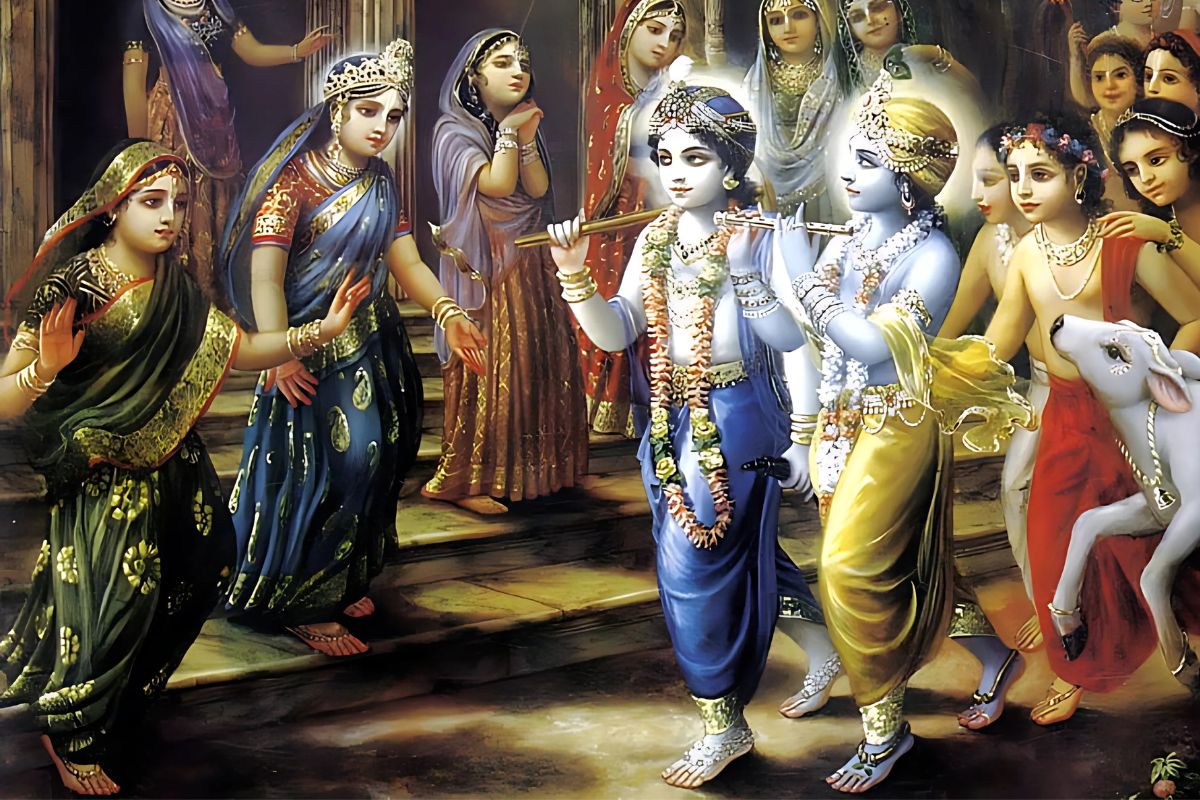
The word God Fearing is a misnomer. Why would you fear the final frontier of compassion, love, peace and joy. Of all the divine manifestations Sri Krishna is the perfect example of emotional connect. Devotion & surrender is all it takes to fall in love with Him. With an Avatara like him the term God Fearing must be replaced with God Loving.
Lord Krishna was the Purna Avatara with 16 Kalas. Every word of His teachings and every act of His was full of simple teachings to mankind.
Sri Krishna played many roles during his 125 years of physical presence. He was Arjuna’s charioteer, a great statesman, and a master musician who thrilled the simple Gopis. He taught the ultimate truth of Yoga, Bhakti & Vedanta to Arjuna and Uddhava. He performed miracles from the time he was born. But always he was in a state of equanimity. It is difficult to recollect a time when Sri Krishna is angry, depressed or ecstatic. The quality of Sthithaprajna which he explains in detail to Arjuna in the Gita is so beautifully enacted by him all through his life. Each of Krishna’s Leela’s were profound in the way it impacted the people around him. The pure love and affection of Sudama and Meera was all he asked for to shower them with bliss. A real lover of God lives a life of surrender to God and service of His creatures without praying for any reward. The Lord calls such devotees as “Ananyah”—those who do not think of Him as being different from their real Self.
BOOK REVIEW
Srimad Bhagavatam
by Kamala Subramaniam
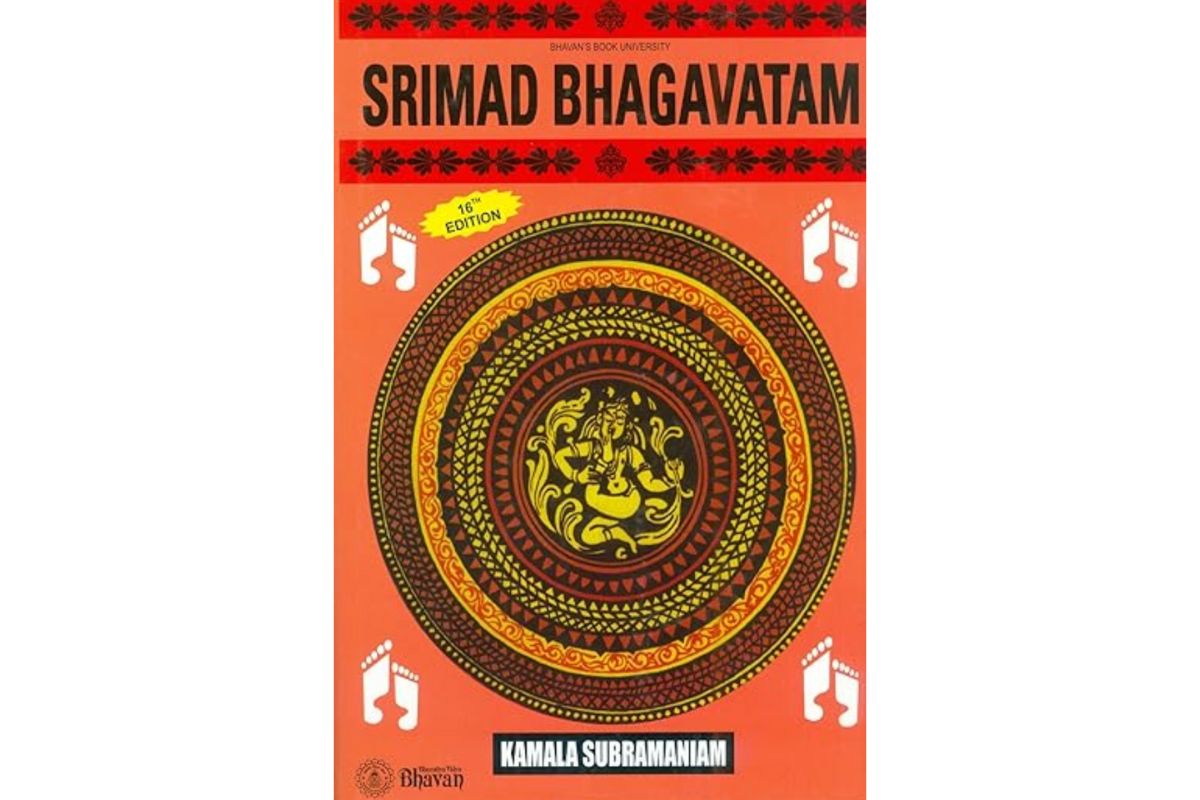
Being a devotee of Lord Krishna all my life, somehow my source of knowing about all the “Lilas” has always been the electronic media. It never crossed my mind to read any book or study the Puranas to explore more. I was quite happy being “one of HIS fans” doting on HIM like zillion others. Attending “Srimad Bhagavatam Saptah” by Master Sri M introduced unexplored dimensions for me.
Even though there are many commentaries on this scripture, Master Sri M chose the one written by the above-mentioned author for the simplicity and beginner friendly aspects of it.
Master also recommended to read at least one chapter every day, first thing in the morning. Saying that it will act as a protective layer, Raksha Kavacha for the rest of the day. It took me a long time to actually implement this suggestion by the Master. However, as the saying goes “better late than never”, I am glad I did. Starting the day with Bhagavatam has had a very different impact on me. I felt more connected, calmer and grounded during the rest of the day. It also helped me see different faces of THAT DIVINE incarnation – Childhood, Teenager, Ruler, Friend, Yogi, Spiritual Guide, the list goes on. The more I contemplate on it, I am at loss of words on how one can navigate through so many roles so effortlessly and execute it all with such perfection. May be that is why, this Avatara is commonly referred as “Purna Avatara”.
Above all, the credit goes to the author of the book who has put together it so beautifully that I got to experience all this and so much more. I am too small a person to share comments on this topic and the author. However, if this short note motivates at least one person to get a copy and dive deep into the mesmerizing world of “Lord Krishna”, I feel grateful.
YOGA RESOURCE
Krishna’s Playful Path to Enlightenment
Incorporating the essence of Krishna’s playful and joyful nature into your yoga practice can deepen your connection to joy and awareness. This guide will focus on one asana (posture) and one pranayama (breath control) practice that embodies the spirit of Krishna’s lilas.

Asana: Natarajasana (Dancer’s Pose)
Benefits:
- Enhances balance and stability
- Strengthens the legs and core
- Opens the hips and chest
- Promotes focus and concentration
Instructions:
- Begin in Tadasana (Mountain Pose):
Stand tall with your feet together, arms at your sides, and take a few deep breaths to center yourself. - Shift Weight:
Gently shift your weight onto your left foot, bending your right knee and bringing your right foot towards your right glute. - Grab Your Ankle:
Reach back with your right hand to grasp your right ankle. Keep your left arm extended forward for balance. - Lift and Open:
As you inhale, lift your right foot away from your glute and extend your leg behind you, while simultaneously raising your left arm overhead. Keep your gaze focused on a point in front of you to maintain balance. - Hold the Pose:
Breathe deeply and hold the pose for 5-10 breaths. Feel the joy of movement and the awareness of your body in space. - Release:
Slowly lower your right leg and return to Tadasana. Repeat on the other side.

Pranayama: Anulom Vilom (Alternate Nostril Breathing)
Benefits:
- Balances the mind and emotions
- Increases awareness and focus
- Promotes a sense of calm and joy
Instructions:
- Find a Comfortable Seat:
Sit in a comfortable position with your spine straight and shoulders relaxed. - Prepare Your Hands:
Use your right hand to form a Vishnu Mudra by folding your index and middle fingers down towards your palm, leaving your thumb, ring finger, and little finger extended. - Close Your Right Nostril:
Use your right thumb to gently close your right nostril. - Inhale Through the Left Nostril:
Take a deep, slow breath in through your left nostril. - Close the Left Nostril:
At the peak of your inhalation, close your left nostril with your ring finger. - Exhale Through the Right Nostril:
Release your right nostril and exhale slowly through it. - Inhale Through the Right Nostril:
Inhale deeply through your right nostril. - Close the Right Nostril:
Close the right nostril with your thumb at the peak of your inhalation. - Exhale Through the Left Nostril:
Release your left nostril and exhale slowly through it. - Continue the Cycle:
This completes one round. Continue for 5-10 rounds, focusing on the rhythm of your breath and the balance it brings to your mind and body.
Embrace the lilas of Krishna in your practice by cultivating joy and awareness through Natarajasana and Anulom Vilom. Allow these practices to inspire you to dance through life with a light heart and a mindful spirit. Namaste!
Community column
The Magical Experience of Vrindavan
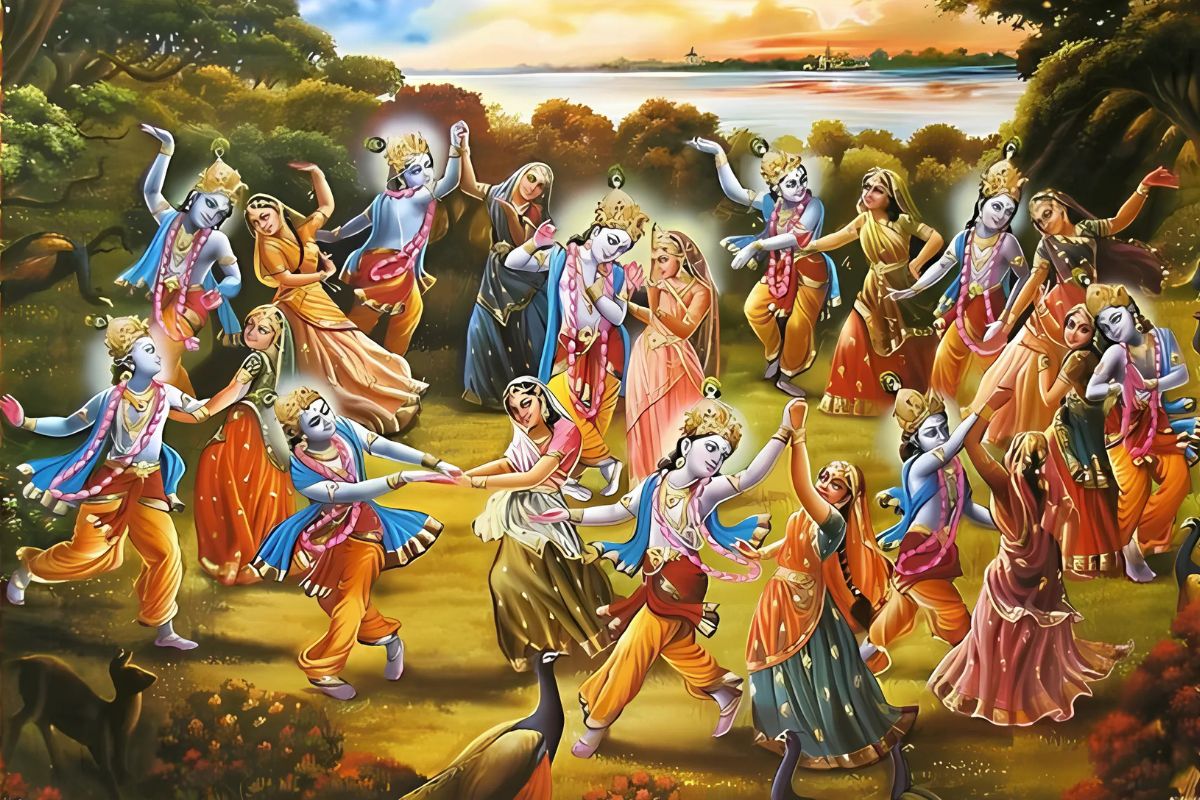
Your flute’s melody calls from the heavens above.
In Vrindavan’s groves, your playful dance enthrals,
While Radha awaits, and beauty enthrals.
Bhagavan Sri Krishna is regarded as Purna-Avatara, which means the full incarnation.. This intimate connection with his devotees is considered a form of magic in itself. In essence, the “magic” of Lord Krishna is not about illusion or trickery but about the power of divine love, transformative grace, and the boundless possibilities of spiritual connection.
Krishna captivated Vrindavan through his divine charm, playful nature, and miraculous feats, particularly during his childhood and youth. He enchanted the residents with his flute music, captivating the gopis (cowherd women) with his dances, and protecting them from natural disasters. Through his Divine play with the Gopis he made all of us understand how Bhakti Yoga is superior to other paths like Karma Yoga, Kriya Yoga and Jnana yoga.
His enchanting flute music drew people to him, transcending social and age barriers. The Gopis rushed forth immediately to where their Lover was. Some left their houses while milching the cow. Some left their houses when they were serving their husbands with food. Some did not take down the boiled rice from the fire. Some did not wait till the milk got boiled. Some had been giving milk to their children. Some were taking food. Some were serving the guests with food. But they all left their work half-finished. Their clothes, hair and ornaments were all disheveled. They ran to behold Sri Krishna. Krishna was their very Prana and soul.
Krishna suggested that they should dance the Rasa. The gopis stood in a circle and between two gopis was found a Krishna. Each one thought that he was holding only her hand. They sang all together. And they danced. The gopis were so devoted to Krishna that Krishna decided to reward them even on this earth and so he granted them oneness with him on that moonlit night. The ecstatic sentiments for Lord Krishna that the gopis expressed may appear like symptoms of lust, but in reality they are manifestations of their pure desire to satisfy the Supreme Lord’s spiritual senses. There is not even the slightest trace of lust in these moods of the gopis.
When Lord Krishna suddenly disappeared they roamed from forest to forest. They asked the trees if they had seen their Lover. They enquired the creepers, the earth and the deer. They said to themselves “ He was with us and in our foolishness we thought we owned him and so, to punish, us, he has gone away and left us lamenting”. In their separation from Krishna the gopis considered a single moment an entire age. Even when they had previously seen Him they had found the blinking of their eyelids intolerable, for it blocked their vision of Him for a fraction of a second.
“ Remembering Your lotus face ‘O’ Krishna “ They said “ adorned with locks of blackish hair smeared with the dust of the cows, we become irrevocably attached to You. And when we remember how you followed the cows from forest to forest with Your tender feet, we feel great pain.”
Pleased with their devotion, Krishna suddenly appeared before them and addressed them thus: “ you should not forget where your duties lie. Attending to your husbands and to your children should be your prime consideration. This love you have for me, for someone other than your husbands, is not good for any woman. It leads you away from heaven. by thinking on me: by singing about me and seeing me often. That devotion will not equal this love which is wrong. So, once again I am asking you, please go back to your homes”.
The gopis stood as though they had been carved out of stones. They were overcome with sorrow. Said the Gopis “We have given up all objects and sought Thy feet. O Thou, difficult to be reached, do not forsake us. So let them rest in Thee. Thou art the greatest friend of all beings, for Thou art verily their own Self. What do we care for husbands or sons, sources of misery as they are; we are attached to Thee, the constant source of happiness.”
The time came for Krishna to leave Vrindavan. The gopis saw Krishna and he rushed to them. He was embraced by each and every one of them and they could not talk, any of them. They did not ask him where he was going .
Krishna left them and went to his playmates. They were numb with the thought that their Krishna, their playmate, their companion from childhood was going to the city Krishna took leave of them and his eyes were sad since he knew that he would never come back to Brindavan: never again to the slopes of Govardhana: never again to the banks of the Yamuna. Never more would he make sweet music on the sands when the moon shed its soft beams: never again would he hold the stick of bamboo in his hand and drive the cows to the forests. He had bade farewell to his cows. But once again he went into the sheds where his beloved cows were standing and they were all weeping. He wiped their tears and with his forearm wiped his own tears
After a few stunned moments the gopis realized that their Krishna had begun his journey to the city. They tried in vain to stop the chariot. The gopis and the young boys set up such a wail that the very skies resounded with their piteous cry. The chariot went further and Krishna held his hands out asking them not to follow him and often he looked back at them and their hands held out to him. He called out to them: I will come back soon. I will send word to you. Please do not be so unhappy.” They stood staring in the direction where the chariot was fast disappearing.
They wiped their eyes and stared intently until the dust rising from the progress of the chariot had settled down and they saw nothing there, far away in the distance. Krishna had gone away from them. The charioteer Krishna of the Mahabharata, lord of Rukmini, appeals to our head and helps us in times of crisis. He leads us out of Kurukshetra and helps us return to Madhuvan. There we find the cowherd Krishna of the Bhagavata, lord of Radha, who appeals to our heart, and awakens a desire for celebration. Senses stirred, heart rejoicing in love, head filled with wisdom, we submit innocently to his music and take our place in his Maha-raas.
When we are not in physical contact with Krishna, we can associate with Him like the gopis, through feelings of separation. Krishna’s transcendental form, qualities, pastimes and entourage are all identical with Him. Devotional service to Krishna in feelings of separation elevates the devotee to the highest perfectional level, to the level of the gopis.
And if one hears about the Lord’s pastimes with faith, sraddha, then by such hearing one will become purified of the heart disease called lust. And when the heart is completely cleansed by absorption in krishna-katha, one can attain the Lord’s pure devotional service.
Through Bhakti alone we can obtain the grace of the Lord, and cross the ocean of Samsara. Let us now sing Lord Krishna’s Name
YOGA GUIDE
Dance of Divinity
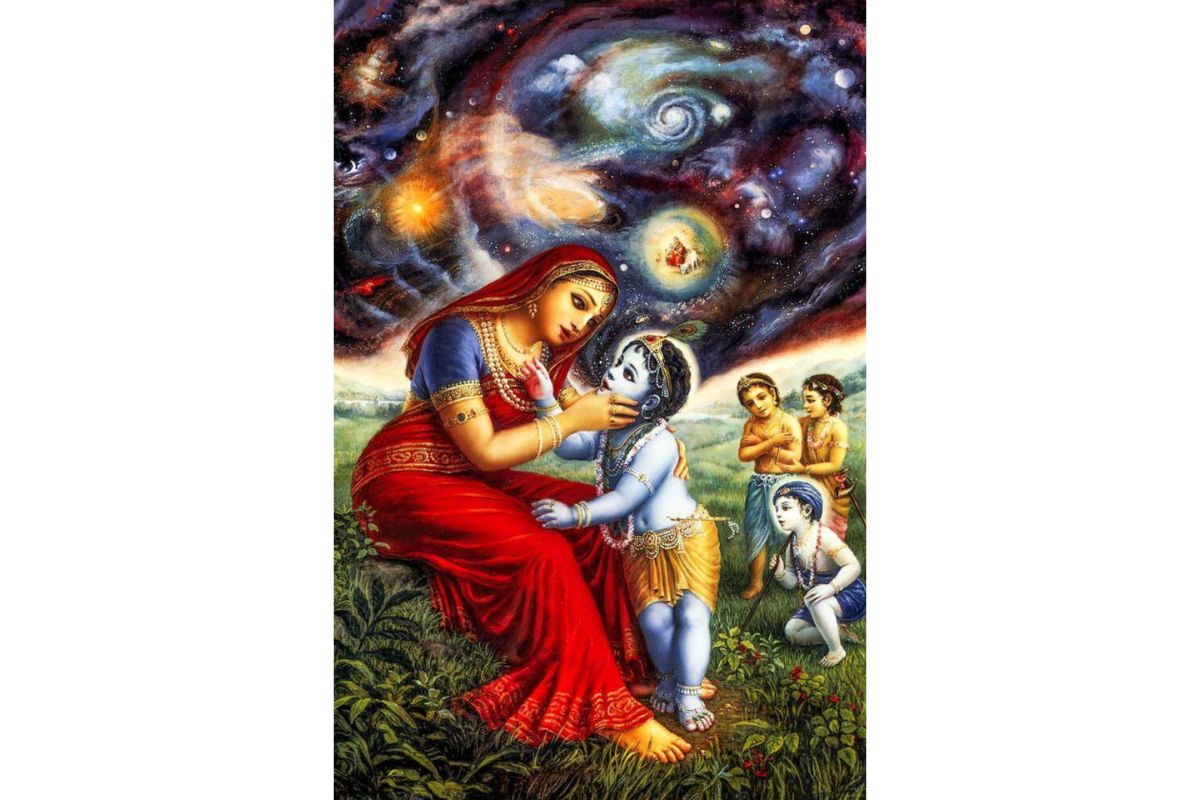
The “lilas” of Krishna are not mere stories; they are a profound and beautiful tapestry of divine play. The word “lila” itself translates to “divine play” or “sport,” and it encapsulates the spontaneous, effortless, and joyful nature of Krishna’s actions. These tales, particularly those from his childhood in Vrindavan, are a rich source of spiritual insight, offering a direct path to the heart of bhakti (devotion) and rasa (aesthetic experience or flavor).
Krishna’s childhood lilas are a perfect example of how the divine can be experienced in the most ordinary and relatable of ways. Unlike the grand and often intimidating tales of cosmic battles, these stories are imbued with a sense of playful innocence and heartfelt connection. They serve as a powerful reminder that the ultimate reality is not a distant, detached entity, but one that can be loved, cherished, and even teased.
Here’s how the lilas connect with the essence of bhakti and rasa:
- Bhakti: The Path of Devotion
The lilas provide a tangible object for devotion. The tales of Krishna’s playful antics—stealing butter, teasing the gopis (cowherd maidens), and charming everyone with his flute—make him an accessible and lovable figure. This accessibility is crucial for bhakti, which is based on a personal, loving relationship with the divine. Devotees can see themselves in the characters of the stories—as a doting parent like Yashoda, a playful friend like the gopas, or a love-struck devotee like Radha. This identification deepens their emotional connection and transforms their devotion into a living, vibrant experience.The lilas also demonstrate the reciprocal nature of bhakti. Krishna’s love for his devotees is as profound as their love for him. He reciprocates their affection, protects them from danger, and delights in their company. This dynamic relationship assures the devotee that their love is not a one-way street, but a beautiful dance of mutual affection. - Rasa: The Flavor of Divine Emotion
The lilas are a perfect vehicle for the experience of rasa. Each story is infused with a distinct emotional flavor that transports the devotee into the world of Krishna.- Vatsalya Rasa (Parental Affection): The stories of baby Krishna, who is mischievous, endearing, and utterly dependent on his foster mother Yashoda, evoke the deep, unconditional love of a parent. When Yashoda tries to tie him up for his mischief (the Damodara lila), the profound emotional exchange between mother and child is a powerful expression of this rasa.
- Sakhya Rasa (Friendship): Krishna’s friendships with the gopas are filled with camaraderie, pranks, and shared adventures. These stories embody the rasa of pure, unburdened friendship, where there is no hierarchy and only the joy of being together.
- Madhurya Rasa (Conjugal Love): The lilas involving Radha and the gopis are the epitome of madhurya rasa. This is often considered the highest form of devotion, where the love for Krishna is as intense and intimate as romantic love. The “dance of joyful awareness” truly comes to life in these tales, where the longing, the union, and the separation all become part of a spiritual journey
The Dance of Joyful Awareness
The lilas of Krishna are ultimately a “dance of joyful awareness.” They remind us that spirituality is not about somber rituals or solemn introspection, but about the joyous, spontaneous, and playful nature of existence itself. Krishna’s lilas encourage us to find the divine in our own lives—in the innocent laughter of a child, the loving embrace of a friend, or the breathtaking beauty of a sunset.
By dwelling on these tales, we infuse our lives with the spirit of Vrindavan. The world becomes a stage for our own personal lila with the divine, and every moment becomes an opportunity for bhakti and a taste of the divine rasa. Through these stories, we learn to see life not as a struggle, but as a joyful dance with the one who is the source of all joy.
TESTIMONIALS OF TRANSFORMATION
ONLINE TTC
Sep to Dec 2024
I had wanted to take a TTC (Teacher Training Course) for ten years, but my work schedule always got in the way. When I discovered that BYK was offering a fully online TTC-1 program, I was thrilled and immediately signed up. From the moment the course began, I felt like the days should never end—learning was so engaging and enjoyable.
By the time the course finished, I had built a strong foundation in Ashtanga Yoga and couldn’t wait to try out everything I’d learned. I was also initiated into Kriya practice; after completing TTC-1, practicing Kriya felt even more meaningful because I understood its roots and purpose.
The teaching throughout the program was outstanding. The instructors were deeply committed and always willing to go the extra mile to help, even with the smallest questions. Before TTC-1, I struggled with various health issues, but now I rarely get sick. My body feels much more energetic, and my overall concentration has improved significantly.
Thanks to the course, I’m now familiar with classical Hatha Yoga texts like the Hatha Yoga Pradipika and Gheranda Samhita. I’ve also connected with many like-minded people who share my interest in the spiritual path, which has enriched my journey even further. The best part is that I can still reach out to my TTC-1 teachers whenever I have doubts—learning has not stopped just because the course is over.
I’m already looking forward to enrolling in TTC-2 with BYK sometime soon.
by Deepak T
Ayurvedic Wisdom
Krishna Leelas – Ayurvedic Wisdom
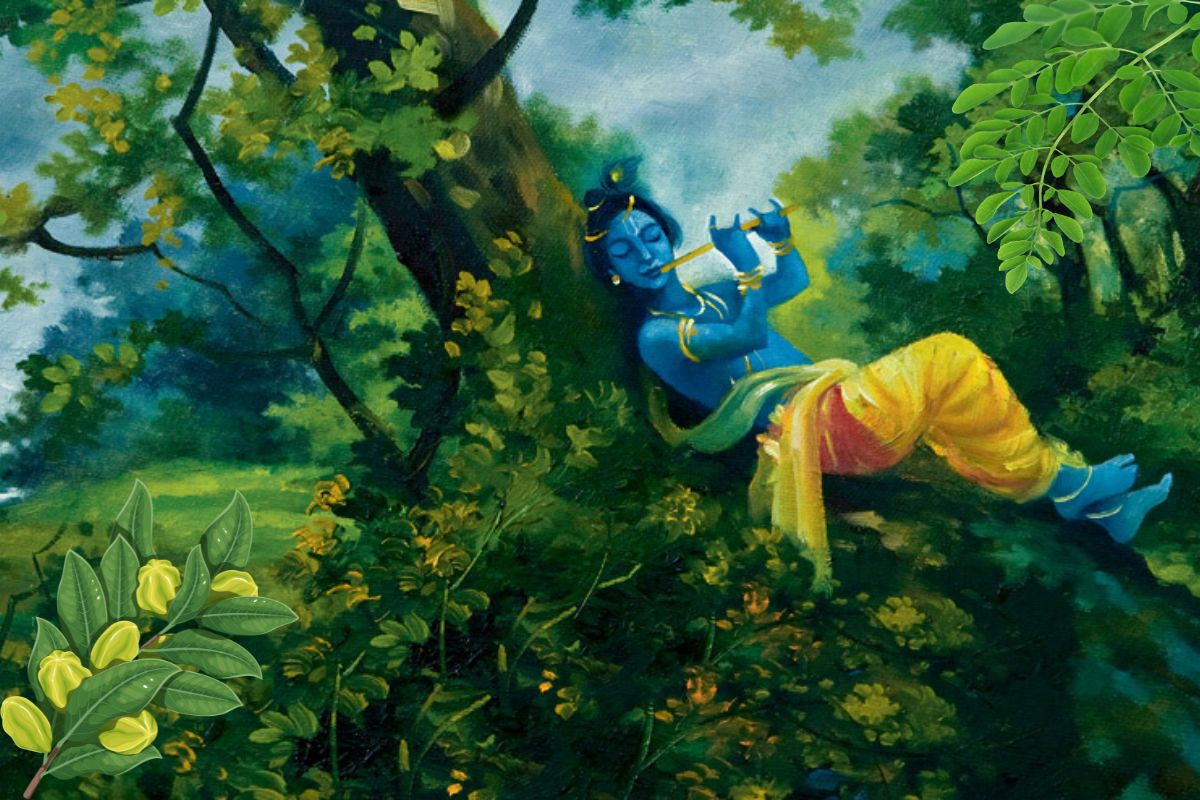
From Lila to Longevity: Krishna’s Role in Spiritual and Physical Wellness
As the Shraavana month begins and the festivals bring in the mood of celebration and joy. Somewhere along the way we also find a sense deeper connection with the spiritual essence of oneself. Let us take this opportunity to highlight Lord Krishna’s connection to Ayurveda.
The Lord of Ayurveda – Lord Dhanvantari is considered as an Avatar of Lord Vishnu and Krishna is none other than Vishnu himself.
Dhanvatari’s emergence with the pot of amruta (Samudra manthan) is symbolic of healing, longevity and the divine grace that restores balance to life, Lord Krishna is revealed for his role in spiritual healing and guidance.
The Bhagvad Geeta as told by Shri Krishna to Arjuna on the battlefield of Mahabharata is relevant even to this day for all of us as the challenges of life’s play is similar to the events of war and also Arjuna’s state then.
The Pancha Pandava’s can be linked to the 5 elements of Nature – Pancha Mahabhoota. The human being has 5 sense organs and 5 organs of action which correspond to these elements. The sense organs of action behave according to their inherent (Panchabhava) qualities.
The mind has the responsibility to control and co-ordinate these sense organs.
But if the mind is hijacked by one of the senses then it deviates from its natural function.
This makes a separation from the consciousness causing a divide. A constant war (within) ensures when the senses become self-serving and egoistical. This then manifests as a disease. Ayurveda is the science of knowledge of health and longevity. Sometimes the body is treated but the mind, affected by the same imbalances, brings back the illness in the body. At other times, the body causes hurdles for the mind.
Unless one understands and imbibes the principles described in the Bhagvad Geeta & Ayurveda scriptures it is difficult to have “Complete” health in Body, Mind & Soul.
In essence while Dhanvantari embodies the healing aspects through Ayurveda:
Krishna represents the broader spectrum of Divine Play, teachings & Spiritual LIBERTY.
Upcoming Courses & Retreats

Thank you for reading
In this issue of Yogavidya, we have:
- Lilas of Krishna:
The Dance of Joyful Awareness - Can Love Heal Even God? Krishna’s Stomach Ache & the Power of Bhakti Explained
- Talk with M
- Krishna Leela’s : Devotion – Surrender – Patience
- Srimad Bhagavatam
- Krishna’s Playful Path to Enlightenment
- The Magical Experience of Vrindavan
- Dance of Divinity
- Krishna Leelas – Ayurvedic Wisdom
- Yogavidya | BYK Monthly Newsletter

